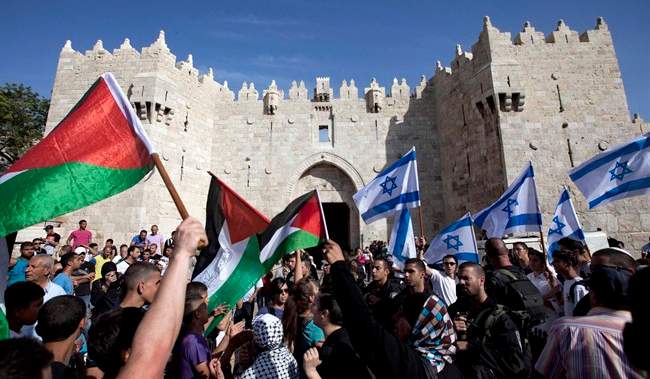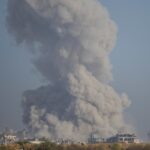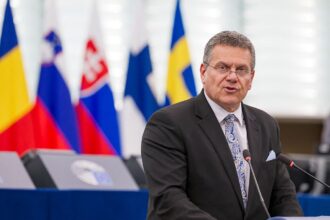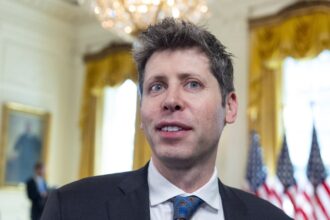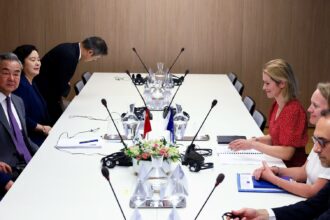The corridors of the United Nations have grown increasingly tense as diplomatic efforts to revive the two-state solution between Israel and Palestine face their most daunting challenges in decades. Against the backdrop of the devastating Gaza conflict that has claimed thousands of lives since October 2023, the international body’s longstanding vision for peaceful coexistence appears to be fading into diplomatic obscurity.
“We stand at a precipice,” UN Secretary-General António Guterres declared during last week’s emergency session on Middle East peace. “The window for a viable two-state solution narrows with each passing day of violence and entrenched positions.”
The concept—envisioning an independent Palestinian state alongside Israel—has been the cornerstone of international peace efforts for generations. However, the current landscape presents formidable obstacles that even the most seasoned diplomats acknowledge may be insurmountable in the near term.
Israeli Prime Minister Benjamin Netanyahu has consistently rejected calls for Palestinian statehood during the ongoing conflict, explicitly stating that “Israel must retain security control over Gaza” in any post-war scenario. His government’s continued expansion of settlements in the West Bank further complicates territorial discussions central to any potential agreement.
Palestinian leadership remains fractured between the Palestinian Authority in the West Bank and Hamas in Gaza, with fundamental disagreements on negotiation approaches and governance models. This internal division has undermined unified Palestinian representation at international forums, including the UN-sponsored talks.
The humanitarian catastrophe unfolding in Gaza has added urgency to diplomatic initiatives. According to the UN Office for the Coordination of Humanitarian Affairs, over 30,000 Palestinians have died since October, while infrastructure damage has rendered large portions of the territory uninhabitable. Meanwhile, dozens of Israeli hostages remain in captivity following Hamas’ October 7 attack.
Regional dynamics have shifted dramatically as well. The Abraham Accords, which normalized relations between Israel and several Arab nations, initially suggested a path toward broader regional stability. However, the current conflict has strained these emerging relationships and complicated the diplomatic calculus.
“The normalization process cannot substitute for a comprehensive peace that addresses Palestinian rights and aspirations,” noted Jordan’s Foreign Minister Ayman Safadi at recent talks in Geneva. “Regional stability depends on justice for Palestinians.”
American involvement remains crucial yet inconsistent. While the Biden administration maintains verbal support for the two-state framework, critics argue that concrete policy actions have been limited. The U.S. has vetoed multiple UN Security Council resolutions calling for an immediate ceasefire, citing Israel’s right to defend itself while simultaneously urging restraint.
European nations have attempted to fill this leadership vacuum. France and Germany jointly proposed a comprehensive peace plan last month that includes phased implementation of Palestinian statehood, security guarantees for Israel, and substantial international financial support for reconstruction. The proposal has gained traction among moderate voices but faces resistance from hardliners on both sides.
Public opinion within Israeli and Palestinian societies further complicates the picture. Polling indicates growing skepticism toward the two-state model among both populations, with younger generations increasingly favoring alternative frameworks or more maximalist positions.
Despite these challenges, veteran diplomats emphasize that abandoning the two-state framework entirely would create a dangerous policy vacuum. “The alternatives—perpetual occupation, a binational state with contested rights, or continued cycles of violence—are far worse,” argues former UN Special Coordinator Robert Serry.
The path forward remains uncertain. Immediate humanitarian concerns in Gaza demand urgent attention, potentially sidelining longer-term political questions. Yet diplomatic experts suggest that reconstruction efforts could eventually create openings for broader political dialogue if properly structured.
As delegations prepare for a major international conference on Middle East peace scheduled for June in Brussels, the fundamental question remains: can the international community revive a vision that many participants in the conflict have already abandoned? Will the diplomatic architecture that has defined peace efforts for decades survive the current crisis, or are we witnessing the end of an era in Israeli-Palestinian peacemaking?

